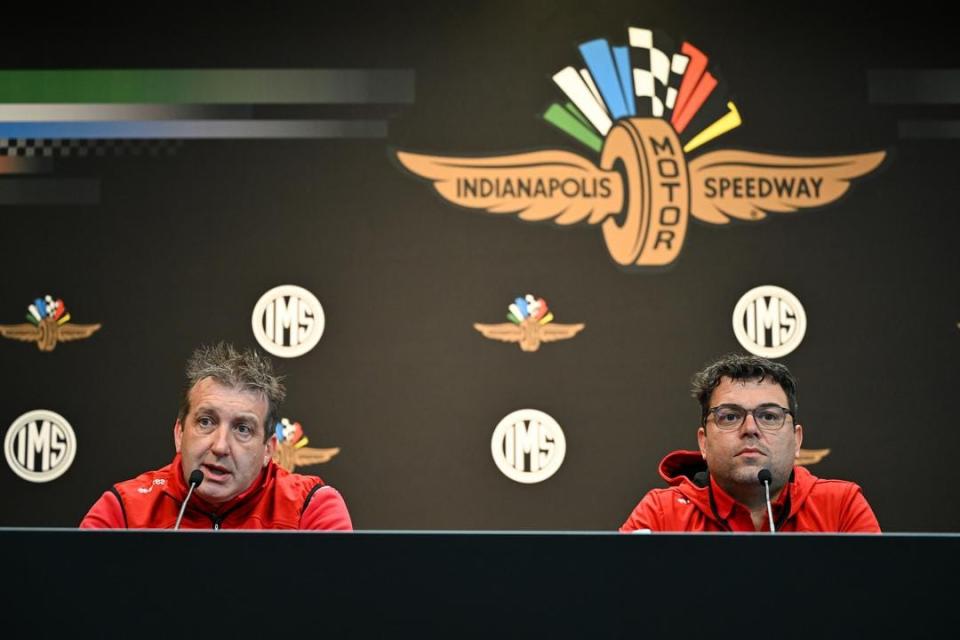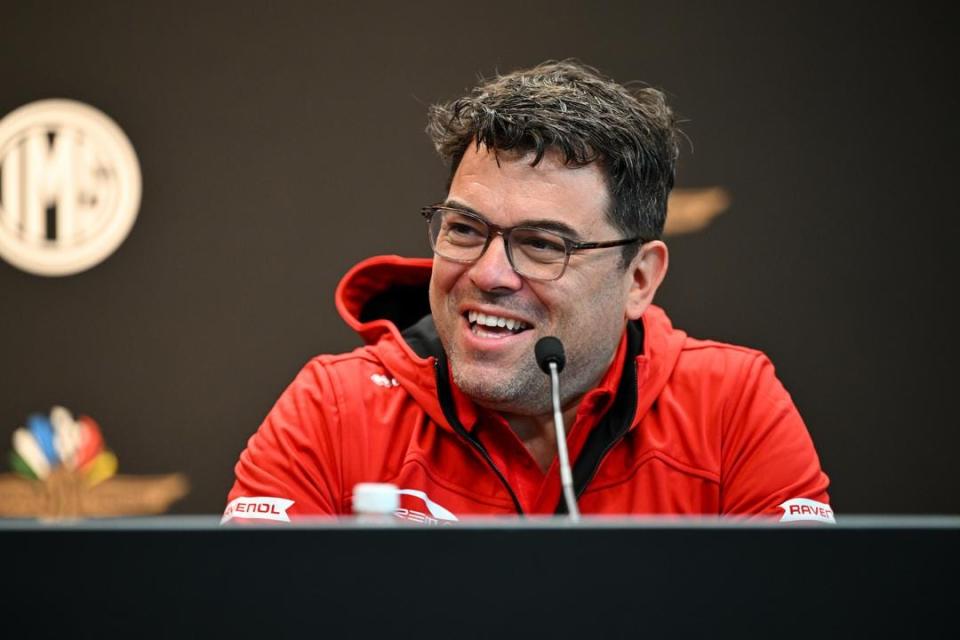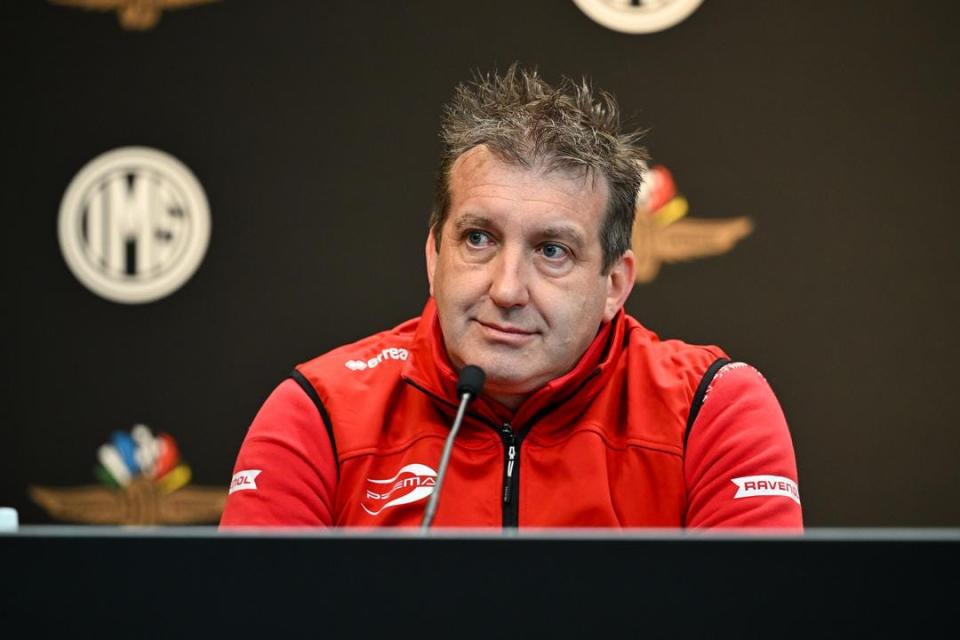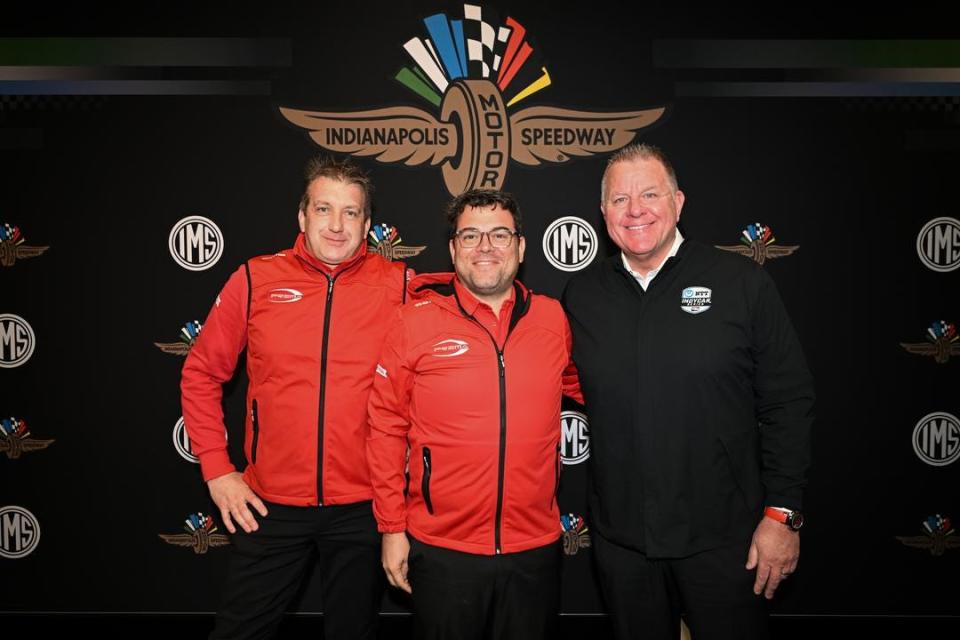Prema may have to race Ganassi for IndyCar grid spots. Could they be ready to buy charters?
That Prema Racing, with its four decades of experience in European junior formula and two-plus decades of picking up championships, wants to mount perhaps its most ambitious project yet in IndyCar should be seen as a resounding stamp on the legitimacy of the sport.
And if they – founder Angelo Rosin, team principal Rene Rosin and its IndyCar division CEO Piers Phillips – achieve what they’ve set out to, it should be seen as one of the sport’s greatest modern-day success stories.
That they’re diving in feet-first is admirable. They have eschewed a part-time slow-build (like Meyer Shank Racing and Juncos Hollinger Racing), starting in the American open-wheel ladder system (JHR and Carlin), funding from a veteran driver’s family (Ed Carpenter Racing and Carlin) and taking over the bones of a decades’ long competitor (McLaren Racing).
But with IndyCar as competitive as it is presently – 27 full-time entries deep with at least two-thirds of those capable of winning any given weekend – such a project is uniquely challenging.

And that they want to do it when the series seems primed to tighten its ranks with a charter system may be downright mad. Many believe a charter system would force those who weren’t one of the 25 cars eligible in last year’s Leaders Circle fight to qualify every weekend for the two final spots on the starting gird. That would pit Prema (at the moment) against the 4th and 5th entries at Chip Ganassi Racing.
Or maybe, just maybe, it hints that Rosin, Phillips and company are prepared to show us all what someone on the outside thinks it’s worth to compete for IndyCar wins, by buying one – or even two – charters from one of IndyCar’s current teams.
Downsizing, unless it be Andretti or Penske slimming from four to three full-time cars, hasn’t been the name of the game for quite some time among series regulars. That Prema has chosen now to take the knowledge base it built winning 80 championships in the junior formula ranks to IndyCar, can only be proof of the untold number of zeroes the team’s ownership is willing to spend to get this program off the ground.
Doing so even five years ago from scratch might’ve taken $20 million-plus in Year 1, what with a couple of $6 million entries, plus shop space, equipment, cars and parts. Now, at a time when real estate prices, top-level driver salaries and the cost of an IndyCar chassis are skyrocketing, is it $30 million? Is it more? And how about when it takes buying out the charters of Dale Coyne, or AJ Foyt, or Ricardo Juncos and Brad Hollinger – or perhaps one of the titans at the top – to be able to confidently run each race day?
A “new challenge” indeed.
Why Prema's plan to join IndyCar is so unique
It’s tough to provide some sort of comparison to what Prema is, in terms of the American racing scene. In essence, they’re a professional, streamlined, championship pedigree organization that, until recently, seemed comfortable mixing it up in the lower levels. There had seemingly been no push to break into Formula 1, as you’d expect an up-and-coming title-driven motorsport venture to do in the States with IMSA, IndyCar or NASCAR.
They’re not the fruits of a retired racer who’s decided team ownership is their next chapter (Penske, Ganassi, Andretti, Rahal, Coyne and Foyt), nor are they longtime American racing staples (JHR and MSR) who’ve decided a progressive, multi-year build into becoming a single, full-time entry is the next long-term project.
McLaren Racing may be Prema’s closest active comparison – a name and brand highly respected in Europe and involved in various categories with the trophy case and legendary driver lineups to match. Four years into its full-time return to IndyCar, while building off of the foundation Sam Schmidt and Ric Peterson had molded, Zak Brown and company have delivered four race wins, nine poles, 26 podiums and three top-5 championship finishes. And Brown and team principal Gavin Ward would likely tell you their project will take at least three years more – maybe longer – to become a deep, established, consistent powerhouse that can take it to the winners of each of the last 11 IndyCar titles: Penske and Ganassi.
But Prema has a far steeper climb toward relevancy than the F1 squad that took over an already active IndyCar program.
Meet IndyCar's newest team: Prema Racing to join in 2025 with two-car team

“We were looking to expand our boundaries to make sure we can create a global group within our entity," Rene Rosin said last week in the team’s introductory press conference. "It’s not to join just to be a number or to be somebody (who’s) part of it. We want to be part as a protagonist. We want to be part where we are ready to ‘do something.'”
They’ll do so with an Indiana-based shop, though a location hasn't been made public. They’ll do so almost immediately, with plans to launch at the start of the 2025 campaign. Their pair of full-time entries will be Chevy-powered, and they’ll be run by Phillips, whose resume includes three seasons as a general manager for Schmidt Peterson Motorsports (now Arrow McLaren) and four more as Rahal Letterman Lanigan Racing’s president, where he worked as recently as 2022.
Their future driver lineup remains a mystery, though their initial prospects include Alexander Rossi and Callum Ilott, along with some of their highly-touted graduates who aren’t presently in F1, including Mick Schumacher and Robert Shwartzman (he tested an Indy car with Ganassi a year ago). Though willing to potentially kick things off with a pair of rookies, Phillips and Rosin said last week they’ll likely target an IndyCar vet and a rookie – similar to their planned makeup of team personnel, from crew chiefs to engineers and mechanics.
“Everybody that’s a racer gets out of bed to go and win and (tackle) the challenges associated with that,” Phillips said. “For me, starting with what’s effectively a blank page and being able to incorporate what I know from my time here in the U.S. in this amazing championship and my previous experiences in Europe and being able to blend that and produce a different sort of culture – a really progressive-thinking organization – really excites me.
“There’s some very, very strong top-level teams in this championship. We know that, but it is our desire that we will come in, and we want to be competitive right from the word go. I know that’s a big ask but we will be working extremely hard in putting all our efforts from the start of the program."

Under possible charter system, Prema may race Ganassi to make grid
Now, if this were all IndyCar’s newest entrant faced, its plans wouldn’t be so head-scratching – ambitious, sure, but not puzzling. But there’s a lot more to this than a well-established single-seater program preparing to join the series.
Since the end of last season, Penske Entertainment officials and team owners have engaged in deep – sometimes intense – conversations over forming a new equity system that would in some ways mimic the charter system NASCAR launched nearly a decade ago. Its goal is to give active full-time teams some sort of tangible asset for the (in most cases decades’ long) work they’ve put into competing in the series. Though none seem to be looking for an exit plan, such a program would give them something to sell down the road, so an eventual exit – or even downsizing – wouldn’t simply involve laying off folks, selling parts and shop space to recoup a fraction of their previous investment.
Such a system, though, must also include sizable benefits to its current holders beyond a golden parachute. Though no format is believed to have been finalized yet, current talks seem to revolve around the 25 active entries – a maximum of three per team – that last year competed for one of 22 spots in IndyCar’s Leaders Circle to eventually own one charters. Holding one would guarantee a team the ability to continue to compete for a Leaders Circle spot, which this year pays out over $1 million each over the course of the season, as well as a guaranteed spot on the grid for at least each race outside the Indianapolis 500.
Many team owners have been pushing automatic spots on the grid in May – a change that generated widespread outrage among IndyCar’s longtime fanbase earlier this year. Whether IndyCar leadership would enrage that sector of its most passionate fans to make that guarantee is unclear, but it seems unlikely. At minimum, you can expect those 25 cars to be on the grid the rest of the calendar.
IndyCar working to enrich team owners: 'We can’t eliminate opportunity for continued growth.'

That becomes vital as IndyCar’s approaches 29 full-time entries with Prema’s addition, at a time when longtime calendar staples like Mid-Ohio and Toronto only currently have room for 27. Perhaps paving projects at those venues would allow IndyCar’s field to grow, but at some point, it seems reasonable that IndyCar president Jay Frye’s "rolling five-year plan" of adding entries will have to evolve into keeping those already there happy and healthy, while allowing some window of opportunity for newcomers.
Though the cap of 27 cars isn’t necessary at most tracks, it would give future charter holders a serious present-day benefit, outside of continuing to be able to vie for the money they’ve been competing for for years. If IndyCar were only to require non-charter holders to qualify for a final couple spots at two stops on the calendar, there’s suddenly not much benefit for those charter holders if they plan to always stick around – especially if a spot in the 500 is off the table. They’d continue competing for the same pool of money they long have against an identical pool of teams and be guaranteed a spot on a couple tight pitlanes, but nothing more.
Insider: Why IndyCar's growth brings problems with its promise
Though Frye declined to elaborate on how widespread knockout qualifying might occur during Prema’s presser last week, the full-calendar option seems both logical and likely. Unless IndyCar teams will be capped at three full-time entries moving forward – chartered or not – in a move that would cut Ganassi's entries by two and make Prema’s additions cars No. 26 and 27 (instead of 28 and 29) in 2025, why would a newcomer, even one with chops like Prema, willingly enter into a weekly battle with Ganassi, just for the right to race at all?
With charter negotiations ongoing, Prema's predicament is not yet guaranteed, but it’s certainly a prospect – and a reasonable one at that. That the Rosins and Phillips are willing to risk the chance of waging such a battle with the series’ best is both a fascinating tangent in IndyCar’s charter negotiations and one only Prema’s inner circle can truly understand.
Those that have come before them have proven just how tough it is to start an IndyCar program from scratch and compete. Without Josef Newgarden, ECR has won just once in seven-plus years. MSR has just one – albeit the 2021 Indy 500 – but it did so with outside technical support. Though still in its infancy, JHR is yet to secure an IndyCar podium, despite its championship pedigree on the Road to Indy. And Rodin Motorsport – known then as Carlin – once attempted a similar IndyCar foray to Prema’s, but first joined Indy Lights, came in with heavy backing from Max Chilton’s family and folded within four years.
So why would Prema commit tens of millions of dollars just to get an IndyCar program off the ground, when even seeing the green flag on Sunday may well mean a direct duel with the series' hottest team?
That is, unless one of Europe’s premier racing brands is preparing to dole out a blank check to persuade one of IndyCar’s perennial competitors to shrink or fold.
This article originally appeared on Indianapolis Star: Could Prema be readying to be IndyCar's first charter buyers?

